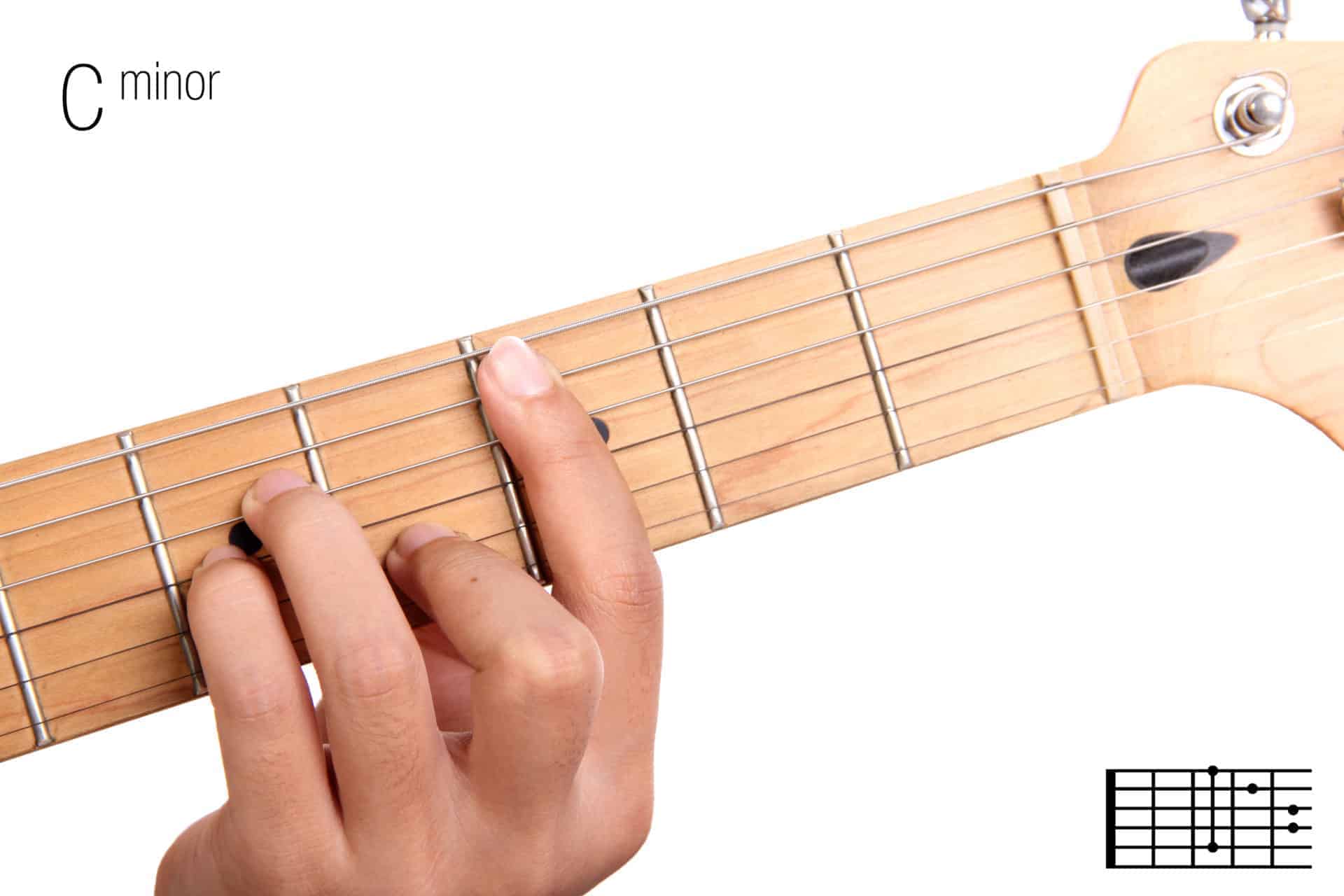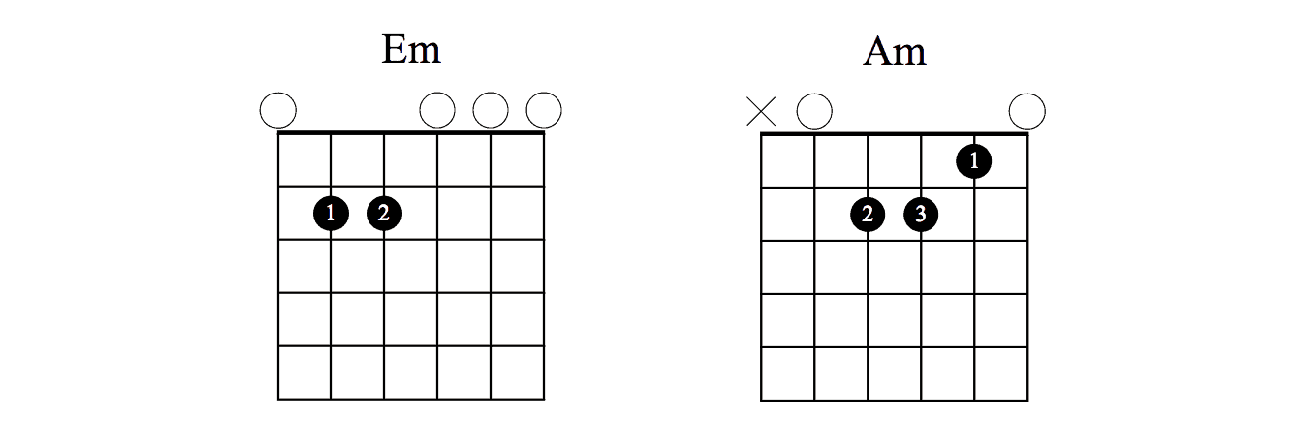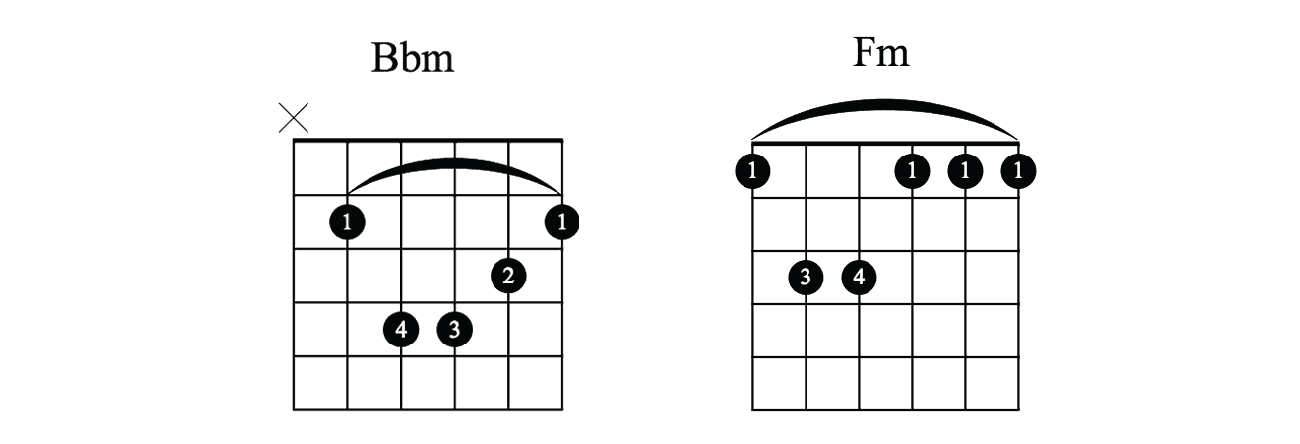In contrast to power chords, minor chords, like major chords, are combinations of three or more notes. Any chord has two attributes which identify it: The root and the chord family. The lowest note of the chord forms the root of it. So for example, a major chord with root note C is called a C major chord and starts on the C note.

The Minor Chord
While major chords are described as happy, the sound of the minor chord is usually described as sad. Major and minor chords are considered the most important types of chords in music, the majority of pop and rock songs use only major and minor chords.
To find a minor chord, start by building a major chord. Do this by identifying the 1st, 5th, and 8th notes in the scale. To get a minor chord, simply lower the middle note of the triad by a half step which equals one fret lower on the fretboard.
The formula for minor would be 1st, 4th and 8th note.

In this example, the 3rd note is an E. Lowering it by a half step leads to an Eb. So C, Eb, and G form the C minor chord.
The first minor chords you should learn are Em and Am.

Later you can shift them up the fretboard as barre chords, e.g. Fm and Bbm:

Here we have a poster with basic chords patterns. You can download, print and hang it in your room to help you memorize some chords.